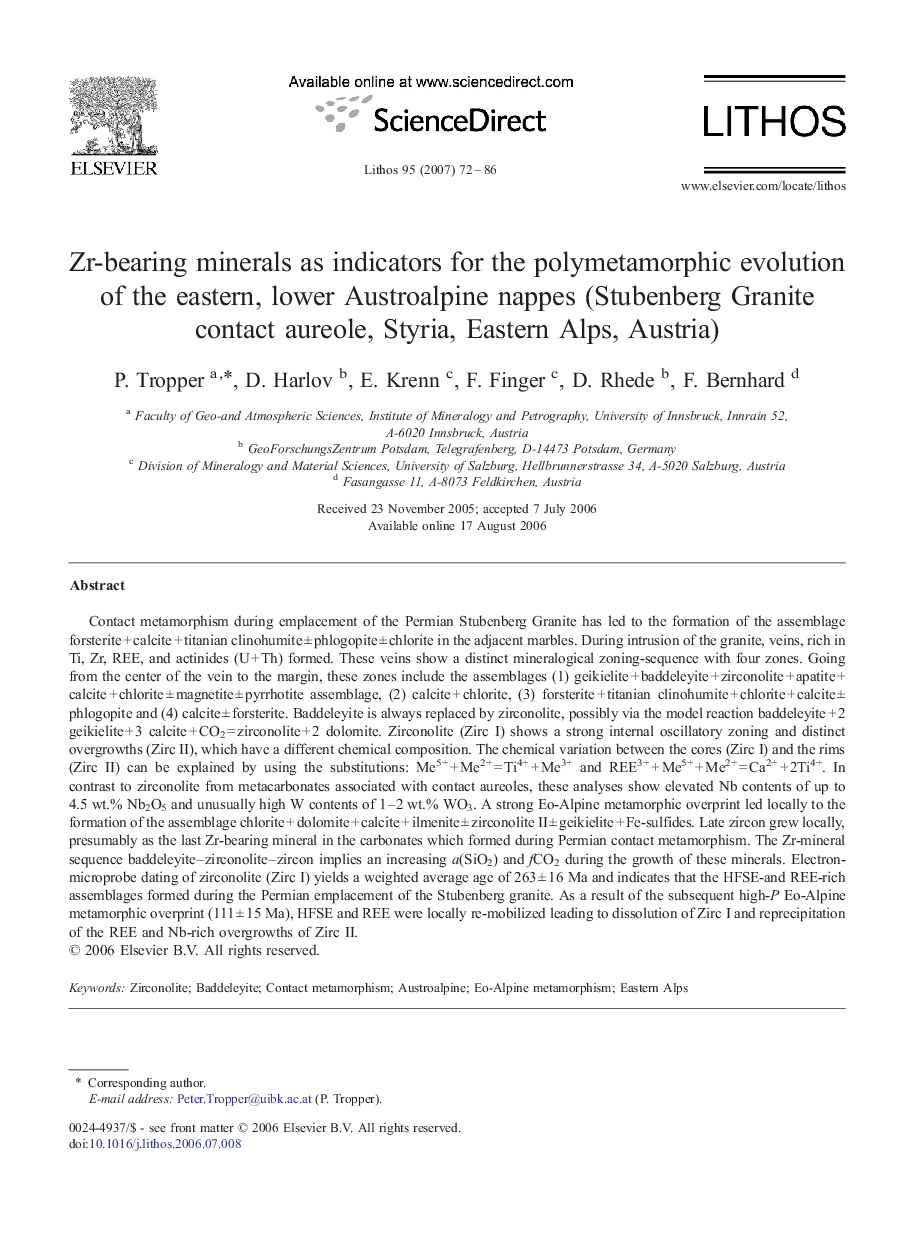| کد مقاله | کد نشریه | سال انتشار | مقاله انگلیسی | نسخه تمام متن |
|---|---|---|---|---|
| 4717796 | 1638770 | 2007 | 15 صفحه PDF | دانلود رایگان |

Contact metamorphism during emplacement of the Permian Stubenberg Granite has led to the formation of the assemblage forsterite + calcite + titanian clinohumite ± phlogopite ± chlorite in the adjacent marbles. During intrusion of the granite, veins, rich in Ti, Zr, REE, and actinides (U + Th) formed. These veins show a distinct mineralogical zoning-sequence with four zones. Going from the center of the vein to the margin, these zones include the assemblages (1) geikielite + baddeleyite + zirconolite + apatite + calcite + chlorite ± magnetite ± pyrrhotite assemblage, (2) calcite + chlorite, (3) forsterite + titanian clinohumite + chlorite + calcite ± phlogopite and (4) calcite ± forsterite. Baddeleyite is always replaced by zirconolite, possibly via the model reaction baddeleyite + 2 geikielite + 3 calcite + CO2 = zirconolite + 2 dolomite. Zirconolite (Zirc I) shows a strong internal oscillatory zoning and distinct overgrowths (Zirc II), which have a different chemical composition. The chemical variation between the cores (Zirc I) and the rims (Zirc II) can be explained by using the substitutions: Me5+ + Me2+ = Ti4+ + Me3+ and REE3+ + Me5+ + Me2+ = Ca2+ + 2Ti4+. In contrast to zirconolite from metacarbonates associated with contact aureoles, these analyses show elevated Nb contents of up to 4.5 wt.% Nb2O5 and unusually high W contents of 1–2 wt.% WO3. A strong Eo-Alpine metamorphic overprint led locally to the formation of the assemblage chlorite + dolomite + calcite + ilmenite ± zirconolite II ± geikielite + Fe-sulfides. Late zircon grew locally, presumably as the last Zr-bearing mineral in the carbonates which formed during Permian contact metamorphism. The Zr-mineral sequence baddeleyite–zirconolite–zircon implies an increasing a(SiO2) and fCO2 during the growth of these minerals. Electron-microprobe dating of zirconolite (Zirc I) yields a weighted average age of 263 ± 16 Ma and indicates that the HFSE-and REE-rich assemblages formed during the Permian emplacement of the Stubenberg granite. As a result of the subsequent high-P Eo-Alpine metamorphic overprint (111 ± 15 Ma), HFSE and REE were locally re-mobilized leading to dissolution of Zirc I and reprecipitation of the REE and Nb-rich overgrowths of Zirc II.
Journal: Lithos - Volume 95, Issues 1–2, April 2007, Pages 72–86